Jay’s Audio CDT3-Mk3 and DAC2-Mk3
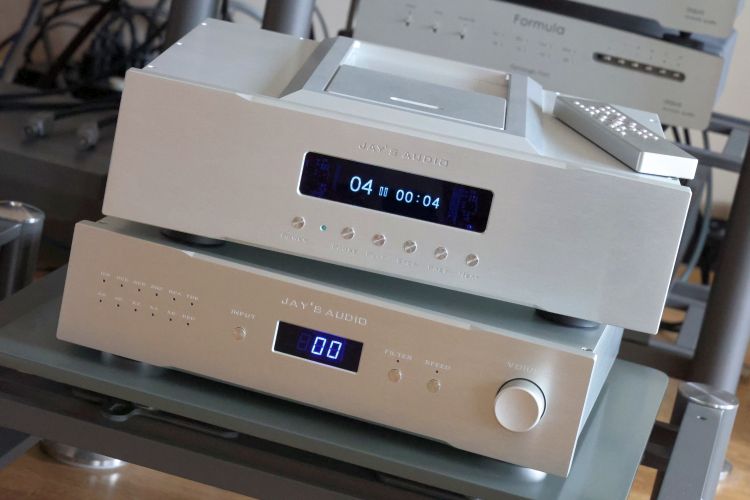
Equal Treatment
Now that we know how much the CDT3-Mk3 improved by using StillPoints I guess it’s only fair to see what benefits these feet can bring to the components to which the CDT3-Mk3 is compared. Given identical circumstances, the MU1 and the CDT3-Mk3 don’t really move closer to one another but actually keep their individual sonic signatures. When both are positioned on StillPoints, the CD transport is similarly articulate as the server and almost as highly resolving but more free-flowing, if slightly more diffuse in terms of soundstage depth and precision. While the feet work marvels for the CDT3-Mk3, I did not feel that they worked as well with the MU1. Ultimately, it’s a matter of applying what the component needs. Incidentally, the MU1 has small neoprene pads as feet but these seem to work well enough and provide a balanced result. I did notice an impressive improvement a while ago when using special edition Callas Audio Tigerwood feet under the MU1, but that’s for another story.
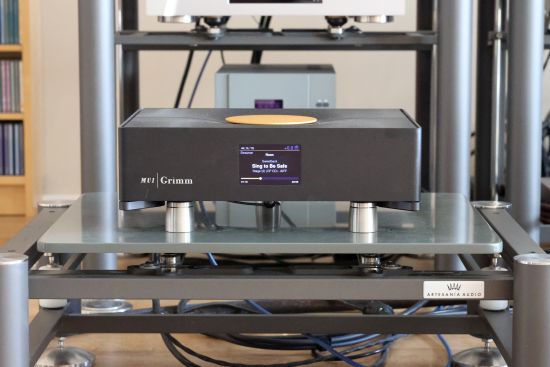
After placing the Aqua Diva M2 on StillPoints, however, I was stunned at the magnitude of improvement, adding further weight to my suspicion that this player’s ultra-compliant tall rubber feet are just not ideal. At close to 9K, the Aqua is considerably more costly than the Jay’s, but it has to be said that it also delivers even better overall sound with enhanced precision, refinement, and delicacy. When used with its own feet, however, the Aqua is still well-detailed and highly refined but rather more relaxed than the Jay’s.
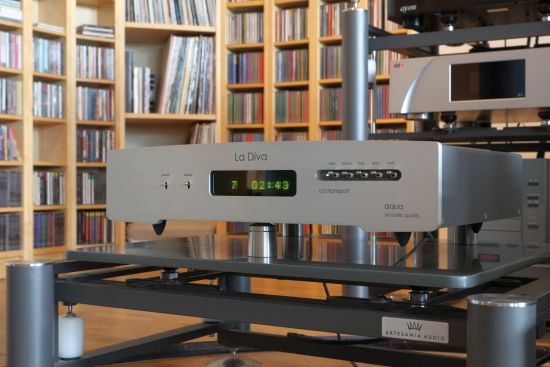
Meanwhile, the MU1 costs more than either CD transport, meaning that it is not only a matter of sound quality but also one of convenience, and budget.
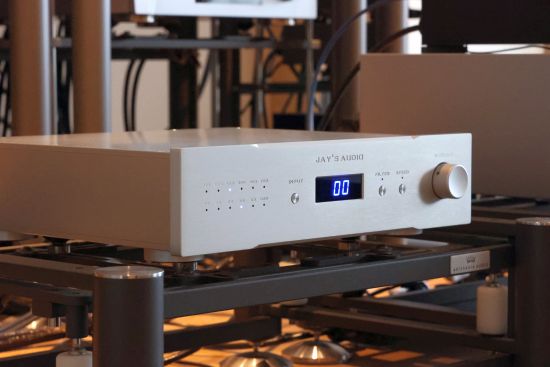
Listening – DAC-2 Mk3
The DAC-2 Mk3 offers very different technology compared to its predecessor, and as can be expected, this has an effect on the sound. However, the Jay’s House Sound is still abundantly present. By that, I mean that it has the decidedly robust, well-grounded, big and full-blooded sound that I have heard in all the Jay’s Audio components so far. Like the DAC-2 Mk2, the Mk3 sounds solid, dynamic, crisp, highly communicative, and upbeat. Especially the remarkable robustness in the bass and the dynamic slam are still highly reminiscent of the previous model.
But whereas the older DAC model traded an amount of precision and refinement for the extra drive, and impact, the Mk3 offers significantly increased resolution, along with a cleaner and more transparent presentation.
AES/EBU and Coaxial S/PDIF (both using Jorma cables) produce a similarly neutral and high-quality sound while still being able to discern the expected usual small format-induced differences.
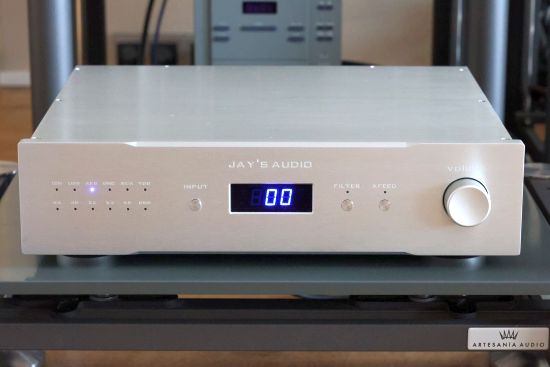
Using the same setup, Belden power cables, and Driade Flow Link Reference 808 interlinks, having compensated on the CH L1 preamp for the 3dB difference in output level, and using a Jorma AES/EBU cable with either the Grimm MU1 or the Jay’s Audio CDT3-Mk3 as a source, I compared the Jay’s Audio DAC2-Mk3 to the Aqua Formula xHD. The latter also uses a discrete resistor ladder technology, albeit a proprietary implementation.
The Jay’s DAC2-Mk3 crisp and explicit presentation makes it sound very nearly as detailed as the Aqua and on the whole, the two DACs are actually quite similarly balanced. Both sound clean, neutral, and linear, but there are differences. While the DAC2-Mk3 is rather explicit in terms of macro-dynamics, its low-level resolution seems a little lower than that of the Aqua. In terms of slam and impact, the Formula xHD is arguably a little bit more polite, or the Jay’s bolder and more forward, depending on your stance. If you ask me, utter and strict neutrality probably lies smack in the middle.
While the Aqua DAC is comparatively a little less impactful than the Jay’s, it does offer an airier and more fluid delivery and slightly better transparency. Ultimately, the Italian DAC is more revealing of the source, not so much because of higher resolution but because has less of a sonic signature that is overlaid on the music. Don’t get me wrong – I definitely do not consider the DAC2-Mk3 to be colored, it actually has a very natural timbre, but there is just a hint of “solid-state-ness”. Of course, the upside of this is that it’s such a stand-out in terms of solidity and impact. Conversely, this also makes the DAC2-Mk3 verge to the direct and dry side whereas the Aqua is more liquid and leans more to the free-flowing and organic side.
With all that said and having switched back and forth repeatedly, I feel that the Aqua ultimately performs on a higher audiophile level, but it also costs almost four times as much, so that’s to be expected. However, I also feel that the Jay’s Audio DAC2-Mk3 has many strong qualities and is a worthy contender in its price range. When thinking of competitors, really only Denafrips springs to mind. With a consistently high level of resolution and refinement, I have a soft spot for DACs such as the Pontus, Venus, and especially the Terminator, but I will add that the brand in general has a very different sonic balance than Jay’s Audio. Being light-footed, airy, ultra-refined, and ultra-precise to the point of becoming analytical, and with Jay’s Audio pretty much flipping this around by being super-robust, impactful, and tonally deeply saturated, it really becomes a matter of personal preference.
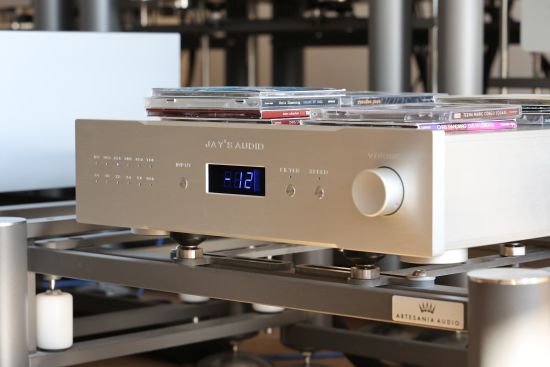
Of course, the DAC2-Mk3’s volume control is a very welcome bonus. It’s in the digital domain but as these controls go, sonically speaking, the implementation is done very well. By bypassing a traditional analog preamp, (unless it regards a particularly high-end specimen) one can often yield gains in the fields of tightness, articulation, clarity, and expression, as well as saving a good amount of money that can be spent on software or accessories. However, as can be expected, the DAC2-Mk3’s volume section does not change the DAC’s inherent sonic signature, and as such, it is no alternative for the liquidity and flow of, say, a good tube preamp. But as really good tube preamps go, these are not normally priced anywhere in the vicinity of the DAC’s retail price…
Power Cables
The DAC2-Mk3’s neutral yet lively character means that it works well with a wide range of power cables. While the stock cable works surprisingly well, it does pull the DAC over to the lean side and I felt that the Belden 19364 worked considerably better. But as it turned out, the DAC worked just as well with either of the two GigaWatt power cables. The PowerSync ULTRA injected the DAC with an appealing amount of liquidity and refinement while retaining its bouncy character, while the LC-2 EVO emphasized the DAC’s inherently expressive character and further enhanced the transient attack.
In terms of operation, I was less enamored with the DAC2-Mk3’s volume control, because its dual-speed response behaves unpredictably, and this often led to my inadvertently raising or lowering the volume much more than intended.
While on the subject of operation, I’d also like to address the DAC’s input selection. Rather than individual input buttons, there’s a toggle switch that only allows running through the inputs in one direction. While that’s not unusual, the order in which the inputs are selected is a bit weird. Starting at the first input, all inputs are selected linearly but after the last input, the DAC jumps to the third input (AES) instead of the first input which is I2S. When resuming the input toggling from the AES input, the DAC goes back to the first input (I2S), and then the rest of the inputs are selected linearly. When the AES input is not connected, the DAC does go through all the inputs linearly, without the intermediate jump to AES. Very strange. Not unworkable, but it does trigger my OCD.
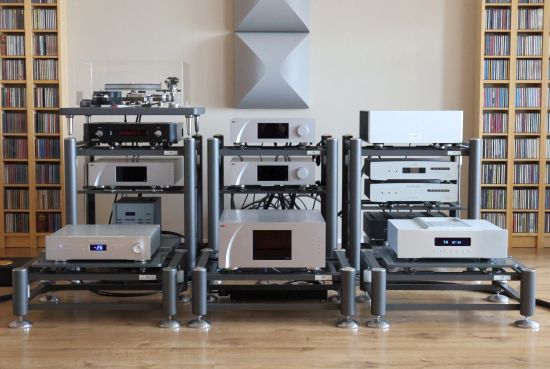
I2S
AES/EBU is my default preferred format for most sources, but when I2S is at hand, there is always the potential for even better sound. This is because the format keeps the clock and audio signals entirely separate, rather than muxing them into a single stream which later has to be untangled. In many cases, I2S does indeed lead to better sound, but just like USB, the result is highly dependent on the implementation of the interfaces on both ends. Sometimes, I2S is just slightly better than AES, sometimes it’s on par, and sometimes, it’s significantly better. With these two Jay’s Audio products, it’s a clear case of the latter.
With the CDT3-Mk3 and DAC2-Mk3, there was absolutely no question whether I2S was superior or not. Irrespective of the Jorma cables’ usual advantages over more mundane cables, even a simple OEM HDMI cable provided very noticeably tighter bass, cleaner mids, and an overall crisper, more direct, and more communicative delivery. And as a cherry on top, the I2S connection yields more upbeat pacing.
The soundstage is very similar in size, although it is slightly less focused with AES. All in all, I feel that I2S very neatly compensates for the transport’s inherent slightly smooth and relaxed character. But if the smoother and richer balance is preferred, one can always use AES/EBU or Coaxial which, depending on the cable, can sound even fuller.
Alas, my CH C1 DAC has no compatible I2S input, but going from what I heard when combining the CDT3-Mk3 with the DAC2-Mk3 when comparing AES/EBU to I2S, the transport’s I2S output is an important feature well worth investigating if you have a compatible DAC.
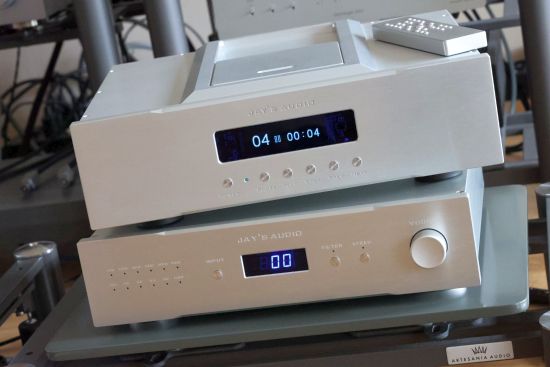
Conclusion
The DAC2-Mk3 offers remarkably solid, dynamic, and expressive sound with increased resolution and refinement compared to its forebear. Its I2S connection makes it an ideal partner for the CDT3-Mk3. Now featuring Soekris discrete R-2R DA conversion and volume control, the DAC2-Mk3 is a worthy contender in its price range.
The CDT3-Mk3 may appear relatively pricey given the normally lower prices that we’ve come to expect from Jay’s Audio products but it has to be noted that NOS CD Pro mechanisms alone retail for 900 euros these days. Further, the transport is built in a true high-end fashion, in its basis machined from a solid block of aluminum and with dedicated enclosed compartments for all the individual sections. Having seen its beautiful inside layout, it’s almost a pity that its cover is not transparent!
When used with AES/EBU, the CD transport offers a blend of the company’s signature robust and full-blooded sound, balanced with a good dose of smoothness and relaxation. Of special note is the use of StillPoints Ultra SS V2 to further elevate the CDT3-Mk3’s performance to a level that is close to the best that I have heard from a CD transport.
External Links
Manufacturer: Jay’s Audio
Distributor: Vinshine Audio
Available from Boelsz Audio

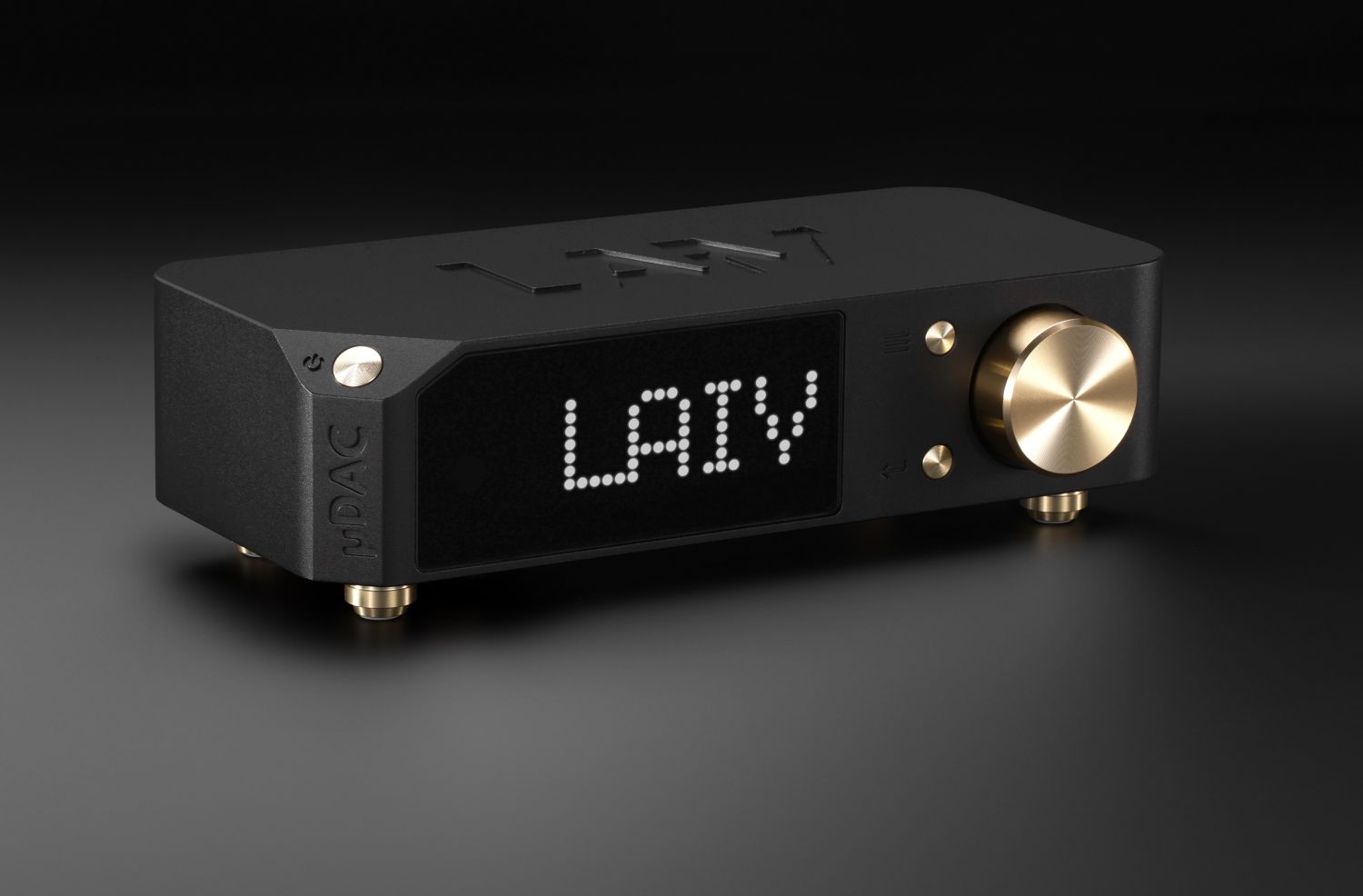






I have an Aqua linQ and was wondering if the contribution of the stillpoints Ultra SS is comparable to the effects you report on the Aqua Diva M2.
Have you ever tested the Ultra SS with the Aqua LinQ?
Best regards
Sébastien
Hi Sébastien, I think the LinQ does not need StillPoints, it sounds just perfect with its factory feet. My guess is if you’d use them, it will be too much. The Diva M2 and LinQ are just rather different-sounding products.
Thank you Christiaan for this information and for your always very interesting reviews !
Great review Christiaan. On tweaks, it would be worthwhile trying the different puck from HEADquarters Audio in Germany. It makes a good difference which you may like (or not).
Hi George, I wasn’t aware of the QStab NSE CD-puck and it is an interesting suggestion!
Hi Christiaan. How would you rate this against Pontus 2? I am considering it as a dac/pre for my system.
Good question. I’ve not had them side by side and I’m not sure how they would compare precisely. My guess is that the Pontus will be slightly more refined and the DAC2 more robust but I’m really not sure. Do note that the Denafrips DACS have no volume control.
Hi Christiaan, I very much enjoy your helpful site. I would also appreciate your review of Bricasti”s new (M 19 CD transport) which, so far has received few reviews. I am currently spinning discs with a Jays Mk2 CDT. The M19 employs a (proprietary) IS2 link. Since I’m also using a Bricasti M12 source controller with integral DAC, this may prove to be a tempting upgrade.
I agree, the M19 is an interesting transport! Alas, I’ve not been able to obtain one for review just yet. In all my tests but one so far, I2S has always been the preferable connection method. In the single remaining case (with Jay’s CDT2, I believe), I2S sounded similar to the other outputs. If you already have a Bricasti DAC and like the airy and refined yet detailed Bricasti delivery, I don’t think you can go wrong with the M19.
Hi Christian
Does this transport work with 220/60 electricity here in Saudi Arabia?
I contacted jay’s audio but I have not received anything from them?
Kind regards
On the product page on the Jay’s website, it is stated: “AC Power: 110V/230V, 50-60Hz”.
Thanks again
So it’s compatible with 60 hertz, right? .
Kind regards
It would seem so, given the information on the Jay’s Audio website: “AC Power: 110V/230V, 50-60Hz”. It is common for electronics to be compatible with 50Hz and 60Hz. However, I am not a representative and can only relay what I found on their website. In case of doubt, I recommend contacting a distributor/reseller/dealer.
Thanks again.
Kind regards